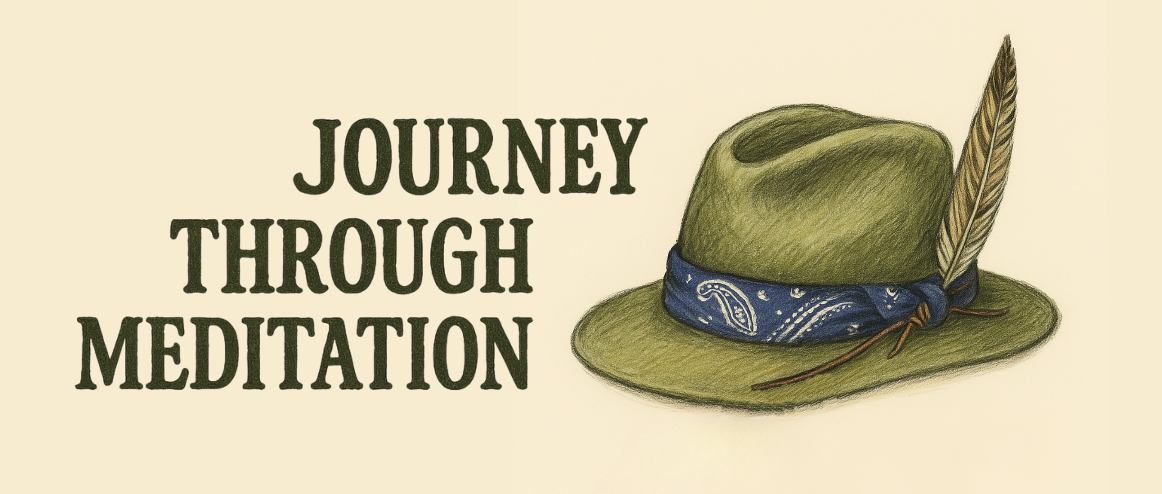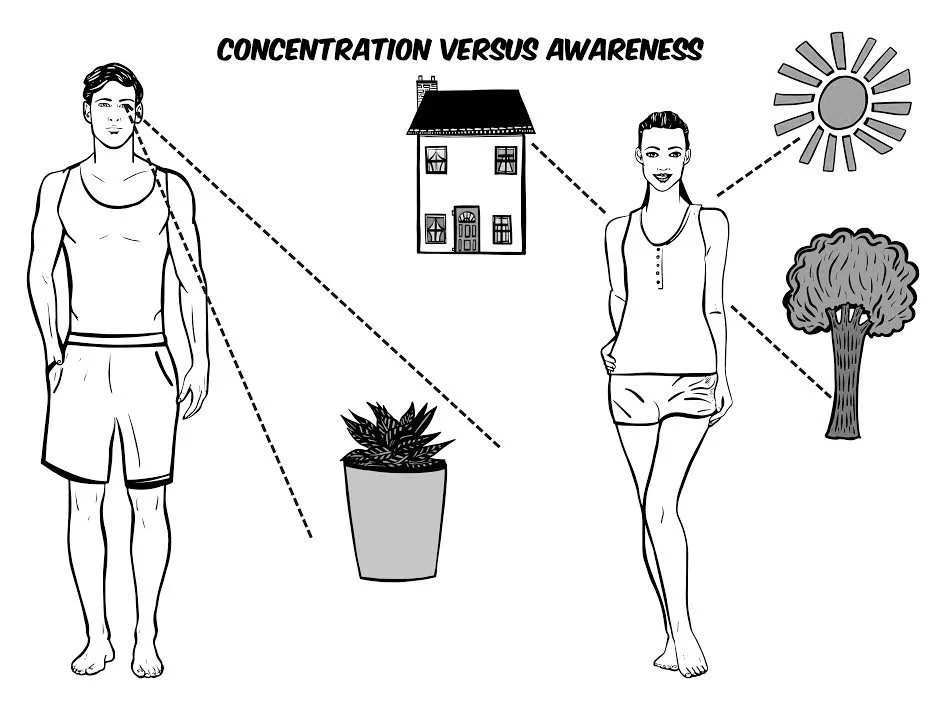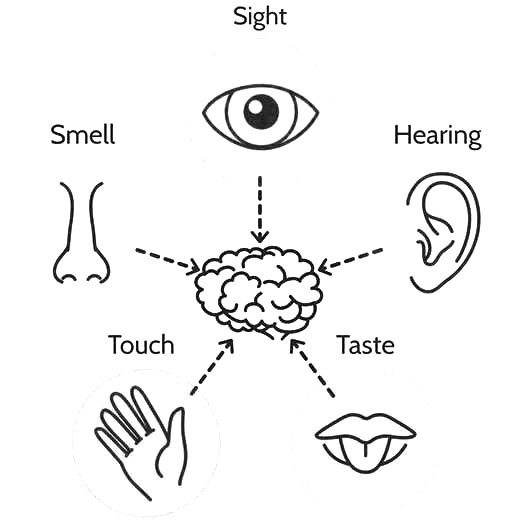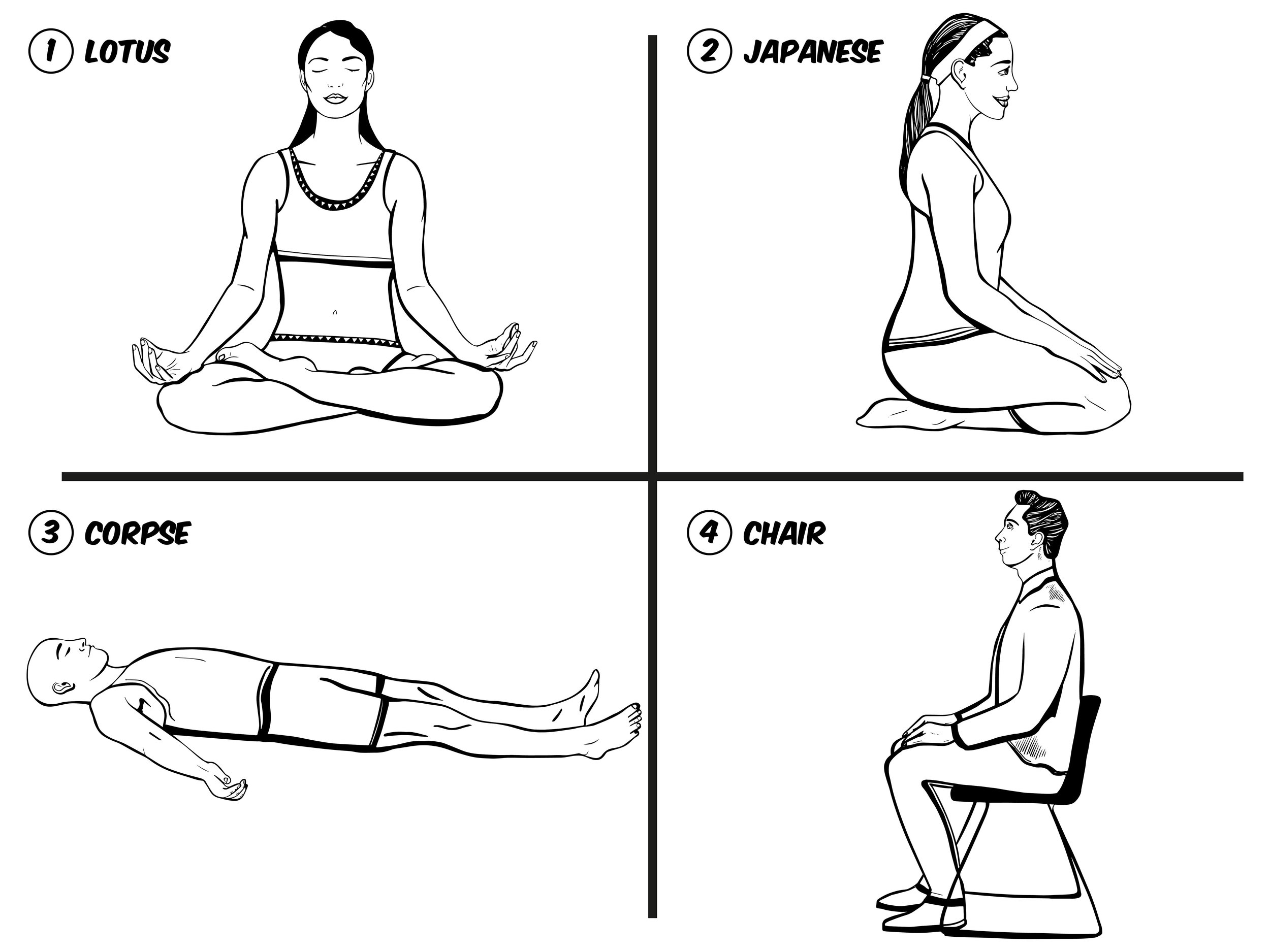Your Custom Text Here
Climb These 8 Limbs of Yoga for Total Purity
Patanjali, the ancient sage, distilled the essence of yoga into the Yoga Sutras, a collection of concise aphorisms that form the foundation of the classical yoga system. These teachings, rooted in the eight limbs of Raja yoga, provide a roadmap to refine the body, mind, and spirit. From ethical practices (yamas and niyamas) to physical postures (asanas), breath control (pranayama), and deep meditative states (samadhi), the path of yoga is a timeless guide to inner peace and spiritual growth.
Patanjali, the ancient sage, articulated the classical system of yoga perhaps more succinctly than anyone. Born before 400 B.C., Patanjali compiled a set of roughly two hundred aphorisms that explained the entire process of yoga from start to finish.
These aphorisms have influenced and inspired generation after generation of genuine seekers, each one of whom must eventually has to grapple with the terse sincerity of these statements.
The Yoga Sutras describe most importantly the process of yoga found within the school of Raja yoga. For a description of the other three traditional schools of yoga — karma yoga, bakti yoga, and jnana yoga — visit my article on them here.
The Yoga Sutras outline the process of yoga as a gradual process of refinement of the body and mind. Patanjali enumerates the process of Yoga into eight steps, often referred to as limbs, which are the following:
1. Yamas
Yamas refer to the things that you shouldn't do. Don’t harm, don’t lie, don’t steal, and don’t covet, and don't overly indulge. You can think of these as a sort of set of commandments, like the 10 commandments, except that they are not a set of orders from an authoritarian personified supernatural god, but rather a set of common sense codes that will ensure good karma and general health and happiness.
2. Niyamas
Niyamas refer to the things that you should do. Do maintain study, purity, contentment, and discipline. And do practice surrender. Niyamas, along with yamas, are a way to purify your actions. Doing these things will ensure a strong foundation for your life.
3. Asanas
Asanas refer to the activities of Hatha yoga, the physical exercises, the movements and postures that most people mistake as encompassing the entire system of yoga. So to avoid confusion throughout your everyday life, you could easily substitute the word asana almost every time you encounter the word yoga applied to a class, studio, teacher, or magazine.
The asanas are a way to purify the body. If you live in a body that is unhealthy and impure, you will not possess adequate preparation to study the breath and the mind. Asanas are easy to perform, and all you have to do is visit your local yoga studio (ahem ... asana studio!) and an instructor will guide you through them.
4. Pranayama
Pranayama refers to the breathing practices. The breath is the bridge between the body and the mind. You can manipulate the breath in order to calm the body and mind as preparation for meditation through a variety of techniques. These techniques include mainly deep breathing or fast breathing.
Pranayama, along with asanas, niyamas, and yamas are in many ways a prerequisite for the more complex and challenging steps within the practices of meditation. These steps are explained within the next four limbs.
5. Pratyahara
Pratyahara refers to the control of the senses and detachment from the distractions of the external world. By closing your eyes and focusing your attention inward, you remains unaffected by stimulus from the surrounding environment.
6. Dharana
Dharana refers to the steadying of the mind onto a single object of focus. By choosing a single object of focus, you begin to undercut the subject object dualism, which paves the way to deeper meditation. Dharana is synonymous with concentration.
7. Dhyana
Dhyana refers to absorption into the object of focus. You become one with the object, totally identified with it and only it. Technically speaking, meditation has not actually begun until you have achieved dhyana.
8. Samadhi
Samadhi refers to the supreme state of meditation, total transcendence of the object of focus, the state of bliss which defies description.
While samadhi is listed as the last of the eight limbs of yoga, Samadhi is a trance state and thus only an intermediate goal on the path to "full" enlightenment. "Full" enlightenment — and I emphasize that with quotations because enlightenment is actually a never-ending process, as we are constantly in the process of expanding our awareness throughout the entire universe — requires the integration of these advanced states of meditation into daily activities.
Mantra is a tool. Here’s how to make it really sharp
Mantras are powerful tools for meditation, designed to focus and still the mind. Whether it’s the deliberate repetition of a japa mantra or the effortless awareness of an ajapa-japa mantra, each category offers unique paths to deeper meditation. By moving from intentional repetition to natural resonance, mantras can guide you from sound to silence, unlocking profound inner peace.
I want to give you some suggestions that will help you better understand the mantra and how to use it.
A mantra is a sound, word, or phrase, often having no meaning whatsoever. Your mantra might be "Om," "I am," "So hum," "Om namah shivaya," or any number of different mantras that correspond to various teachers or traditions. For a detailed explanation of four useful mantras, visit my article here.
Your mantra is a tool, so let’s make sure it’s as sharp as possible.
The first important thing to understand is that mantras fall into two general categories, and one of the categories leads to the next. In other words, the two general categories of mantra present two distinct ways of using them. These are the two ways:
1. Japa mantra
The first category of mantra is japa mantra. Japa means repeating or remembering the mantra.
So in japa the mantra is mechanical. You repeat the mantra mechanically.
Initially, you have to insert your mantra mechanically by deliberately repeating it inside your mind. This is japa mantra. You may feel the need to repeat the mantra slowly, as if the mantra is moving through a viscous substance like honey, or you may feel the urge to repeat the mantra quickly, as if the mantra is moving through thin air. Either is fine. But the trick is to allow the mantra to come at its own speed.
2. Ajapa-japa mantra
The second category of mantra is ajapa-japa. Ajapa-japa means constant awareness of the mantra.
The letter ‘a’ in front of japa means without. Therefore, ajapa-japa is the repetition and remembrance of the mantra without the usual level of mental effort.
So in ajapa-japa the mantra is natural. The mantra naturally repeats itself.
Eventually, you simply have to listen for your mantra flowing naturally as it repeats itself inside your mind. This is ajapa-japa. You may feel that the mantra has begun to resonate like a song that has stuck inside your mind. This is also fine. But the trick at this point is to allow the mantra to lead you to soundless sound, or no sound, so that you experience silence.
Concentration vs. Awareness Meditation: Understanding the Two Types
Meditation practices may vary widely, but they often fall into two main categories: concentration meditation (closed meditation) and awareness meditation (open meditation). Visualize a white wall with black dots—focusing on one dot mirrors the essence of concentration meditation, while noticing the entire wall reflects awareness meditation. Each style offers unique benefits, from heightened focus to expanded mindfulness, catering to diverse goals and experiences.
Many forms of meditation exist, ranging from the simple and easy, to the complex and difficult.
But while many traditions have their own names for the various styles of meditation, keep in mind that scholars often divide meditation into two broad categories:
1. Concentration meditation — also known as closed meditation
And ...
2. Awareness meditation — also known as open meditation
To Understand the Two Types of Meditation, Imagine a White Wall with Black Dots
In order to understand this distinction, I want you to imagine a white wall with black dots.
In concentration meditation, you direct your attention onto one particular dot to the exclusion of everything else, and thereby develop your powers of concentration. Concentration meditation requires willpower.
In awareness meditation, you open your attention to the whole wall and all the black dots, attempting to become aware of as much as possible, thereby developing your capacity for awareness. Awareness meditation requires noticing.
In concentration meditation, you find an object of attention. This object of attention could be a mantra, a sensation, a chakra, an attitude, an image, or the breath. By focusing on the object of meditation, you gradually become identified with the object. If you maintain concentration on that object long enough, you can eventually transcend it and enter a state of bliss.
In awareness meditation, you do not limit your attention to a single object. Instead, you observe a whole range of phenomenon, engaging all of your senses, especially those associated with sight, sound, sensation, and scent. By maintaining constant attention of these you gradually become more and more present and integrated with daily experience.
Use These Two Skills to Sharpen or Use Your “Sword”
A common quick analogy is to think of concentration meditation as sharpening your sword, and awareness meditation as using your sword.
Buddhists call concentration meditation shamatha and awareness meditation vipassana. Concentration meditation leads to an experience called samadhi, whereas awareness meditation leads to an experience called satori.
Also keep in mind that people tend to refer to awareness meditation as mindfulness meditation.
Overall, my goal here is to help you understand that there are two basic styles of meditation — concentration meditation and awareness meditation.
Therefore, since meditation is really just limited to two basic styles, meditation really does not so much depend on the style in which one meditates, but instead on the object upon which one meditates. Click here to learn about the various object upon which you can meditate.
Practice Mindfulness By Engaging These 5 Senses
Mindfulness transforms everyday activities into opportunities for connection and presence. By engaging your senses—sight, hearing, touch, smell, and taste—you can enrich your experience of the world and ground yourself in the beauty of the present moment. Whether noticing the colors of objects, savoring the flavor of a meal, or feeling the texture of a surface, mindful attention awakens you to a richer, fuller, and more meaningful life.
One of the most essential components of mindfulness practice is engaging your senses all day long.
Whenever we daydream, we lose contact with our physical reality. When we reflect too much on the future or too much on the past, we create an alternate reality that denies the beauty of each and every moment.
Sometimes we are working on something, but we are not working on that thing consciously. We are just "going through the motions." Rather than experiencing the richness of the world around us in during each activity, we proceed in a dull and dreary manner, half asleep.
Proceeding through life in such a way is not optimal for our health, or for our personal and spiritual development.
Mindfulness is the practice of attending to all of your primary senses constantly throughout the day.
Utilize These 5 Primary Senses For A Richer, Fuller, More Meaningful Life
1. Sight
Practice using your sense of sight to observe things that are in front of you, things that you might not have noticed before. Notice all the objects and arrangements of things. Notice the colors of the objects. Notice the shape and form of things. Look other people in the face and practice really seeing them.
2. Hearing
Practice using your sense of hearing to notice the times when you are so focused on an activity that you are not cognizant of the sounds around you. Notice the sounds of appliances in the other room — a dishwasher, a laundry machine, a microwave. Notice the sounds of the birds outside. Notice the sound of the cars passing by, and any distant sirens.
3. Touch
Notice the sensation of your body as it interacts with your environment. Notice the feeling of your arms resting atop a table as you are sitting or your feet on the ground upon which you are standing. Notice the feeling of your fingers wrapping around the handle of a mug as you pick it up. Notice the texture of things — wet, dry, rough, smooth.
4. Smell
Notice if you smell anything. When you are in a store, notice if the store smells like anything. When you are around food, practice smelling the food.
5. Taste
Practice savoring the taste of food. What flavor does the food possess?
Learn to strike a pose with these 4 meditation postures
Posture is the foundation of effective meditation. A good posture balances comfort and alertness, allowing you to maintain focus for extended periods. Whether you prefer the traditional lotus pose, the simplicity of chair pose, or the relaxation of corpse pose, each option offers unique benefits. Discover the four basic meditation poses and find the one that suits your practice best.
Posture is perhaps the first aspect of your meditation practice that demands consideration, as learning to sit properly is one of the most essential skills of meditation.
A good posture is one that provides a balance between being comfortable and alert, and one that you could easily maintain over an extended period of time. The essence of good posture is the ability to sit upright, not too hunched over.
There exist a variety of poses that enable good posture for the meditator. Here are the four most basic poses:
1. Lotus pose
Lotus pose is the most advanced meditation pose, and it requires some strength and flexibility.
Lotus pose works like this: From a seated floor position, bend your left knee and bring your left heel to press on the perineum with the sole of the foot against the inner right thigh. Then bring your right heel and place it atop the left heel.
2. Japanese pose
Japanese pose, also called seiza pose, is a traditional Japanese style of sitting.
Japanese pose works like this: place your knees on the floor and rest your butt on the backs of your feet so that the tops of your feet are flat on the floor.
3. Corpse Pose
Corpse pose, often called savasana pose, is often performed at the end of series of yoga movements. But you can meditate in corpse pose too — so long as you don't fall asleep!
Corpse pose works like this: lay with your back on the floor with your head comfortably resting and your your legs and arms outstretched. Allow your legs and ams to fall limp, palms faced up or down, whichever is most comfortable.
4. Chair pose
Chair pose is particularly suited for westerners, and was recommended by paramahansa yogananda, author of Autobiography of a Yogi.
Chair pose works like this: Sit in a chair with your spine straight, not touching the back of the chair, with your hands resting upon your lap. Tilt the pelvis forward and the upper back will naturally straighten and strengthen. Keep the shoulders relaxed.
While most modern meditators choose to sit in a chair, some younger or more advanced practitioners may choose to sit on the floor. Each of these positions the meditator directly on the floor.
5 Types of Mind Chatter That Disrupt Meditation (And How to Manage Them)
Meditation often reveals the activity of the "monkey mind," a constant stream of thoughts and impressions known as modifications of the mind. These mental distractions—ranging from imagination and memory to correct or wrong knowledge—can disrupt the serenity of your natural state. By observing and not identifying with these mental modifications, you can quiet the mind and deepen your meditation practice. Learn about the five primary types of mind chatter and how to navigate them.
Problems arise during meditation because of the modification of the mind. A modification of the mind is any instance where a mental impression, such as a thought or an image, arises in your mind, thereby altering from its empty, pure, and serene natural state.
I don’t want to propose that all thoughts and images in the mind are necessarily bad. And I certainly don’t want you to judge yourself anytime a thought or an image arises. You don’t want to suppress or repress anything.
Nevertheless, the purpose of meditation, obviously, is to quiet the mind. And you can achieve this by becoming more aware of the thoughts and images and by resisting the urge to identify with them.
Whenever thoughts and images do arise, there is a corresponding reason. That's why I want to outline the five primary modifications, the five types of “mind chatter” or “monkey mind:"
1. Correct knowledge
The sanskrit word for correct knowledge also means proof, basis, foundation, and accurate notion.
There are three means by which a person can attain correct knowledge. One, through direct perception, or gaining evidence of through the senses, such as seeing. Two, through inference, or through arriving at knowledge by a logical conclusion. And three, through testimony, or through the word of an acceptable, reliable, and trustworthy authority.
2. Wrong knowledge
The sanskrit word for wrong knowledge also means perverse, error, mistake, misapprehension, and calamity.
Wrong knowledge is knowledge determined as such after study. Wrong knowledge could range anywhere from inaccurate scientific theory and faulty medical diagnosis to wrong testimony in a court of law. As such, wrong knowledge is the basis for the majority of suffering in human life.
3. Imagination
Imagination is the process of looking into the future and forming a mental image or concept of something that one could experience.
4. Memory
Memory is the process of looking into the past and holding the impression of things one already experienced.
5. Sleep
You may be wondering why sleep is listed as a modification of the mind, when the deep sleep state especially is an absence of all thoughts and images whatsoever.
Well, deep sleep is listed as a modification because the deep sleep that most people experience is unconscious. When you fall asleep and descend into the deep sleep state, you lose all awareness.
It’s possible to descend into deep sleep consciously, but this requires a practice of yoga nidra, or yogic sleep, which is similar to meditation. View my article on those here.
Hone Your Focus with these 6 meditation objects
Meditation boils down to two core styles: awareness meditation and concentration meditation. While awareness meditation involves expanding attention to all sensory inputs, concentration meditation narrows focus to a single object. But a large part of what defines a meditation practice is the objects of focus. From the breath and mantras to sensations and chakras, exploring the six basic meditation objects helps create a personalized and effective practice suited to your needs.
There are really only two basic styles of meditation.
1. Awareness meditation
And ...
2. Concentration meditation
I have provided a more detailed review of these two basic styles here.
So, since there are really only two basic styles, why does it seem like there are so many different types of meditation out there?
Two reasons:
1. Context matters
Different traditions — say Buddhist, Hindu, Tibetan, Taoist, Kashmir Shaivite, etc. — and their varying respective regions have all devised different names for the same basic types of meditation.
And ...
2. Objects matter
The way in which someone meditate depends much less on the two different styles —concentration and awareness — and much more on the object upon which someone meditates.
Therefore, I want to outline the six basic objects of meditation.
Keep in mind that when practicing awareness meditation, you expand your attention to include all six objects at once — or as many of them as you possibly can. When practicing concentration meditation, you isolate your attention to include only one of the six basic objects.
Here are the six basic objects of meditation:
1. Breath
I discuss the three types of breathing here, which includes quiet breathing, deep breathing, and fast breathing. While deep breathing and fast breathing are great warmups for meditation, quiet breathing should comprise the majority of your actual meditation session.
To meditate on breath as an object of focus allow your breath to function naturally at its own pace. Observe numerous rounds of inhalation and exhalation, noticing the space between the inhalation and exhalation.
After a few moments, consider adding the technique of counting to the breathing repetitions. After one round of inhalation and exhalation, count to one. After the second round, count to two. After ten rounds, count to ten, and start again at one.
2. Mantra
Mantra is perhaps the most popular object of focus for meditation. It’s also one of the easiest objects of focus. For that reason, I want to recommend mantra as the object of meditative focus most beginners.
A meditation mantra is a meaningless word or sound that aids concentration in meditation.
To meditate on a mantra as an object of focus repeat the mantra silently inside your head, listening to each syllable as it echoes, allowing the vibration of the mantra to fill your mind.
Repeating a mantra will gradually push you closer to a place of mental stillness.
3. Sensation
To meditate on sensation as an object of focus allow your body to relax as completely as possible. Notice anything that affects your body. Aches, pains, and irritations. Heat or coolness. Feel your skin, your muscles, and your bones. Tune into your body, and try to maintain constant vigilance of your body.
Meditation on sensation is great for stress reduction.
4. Chakras
Meditation on chakras is similar to meditation on sensation. The difference is that when you meditate on chakras place your attention on each of the seven chakras located in specific parts of your body, rather than any number of random parts of your body.
If you are not familiar with the seven chakras, read my article on chakras here.
To meditate on chakras as an object of focus, deliberately move your attention sequentially from one chakra to the next, starting at your root chakra and concluding at your crown.
5. Attitude
Meditation on attitute requires that you develop your emotional capacity, that you be able to feel and relate more deeply.
A common common attitudes that you can meditate on are compassion and kindness. For a more in depth description of those two attitudes, read my article here.
To meditate on attitude as an object of focus, choose an attitude, such as compassion or kindness, and silently wish those feelings toward yourself, your family and friends, your community, and the world.
6. Image
Meditation on image requires that you visualize something in your mind and maintain your attention on that image. Examples of visualized images that you could meditate on are a lotus flower, a cactus, or a person.
To meditate on an image as an object of focus, start by allowing the image to gradually appear and sharpen in your mind. First, allow the image to establish some contours. Second, allow the details of the image to work themselves out. And third, allow color to enter the image to give it greater vibrancy.














